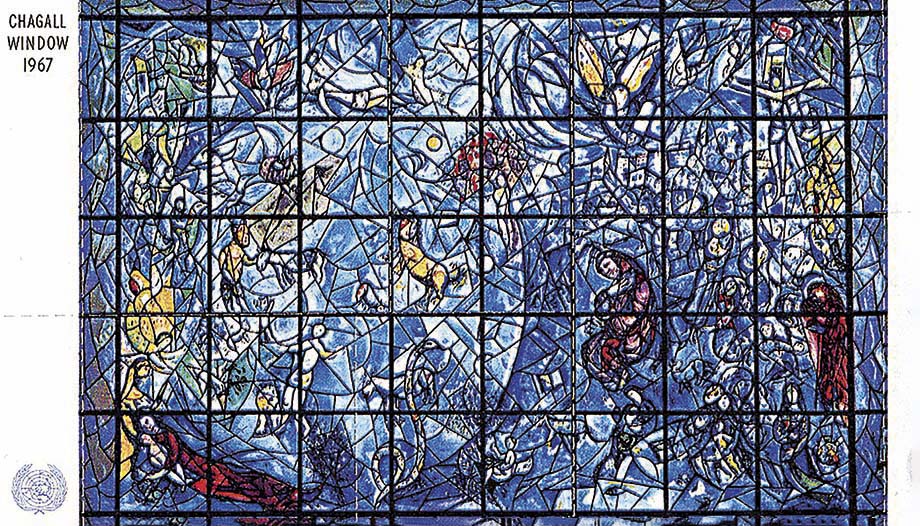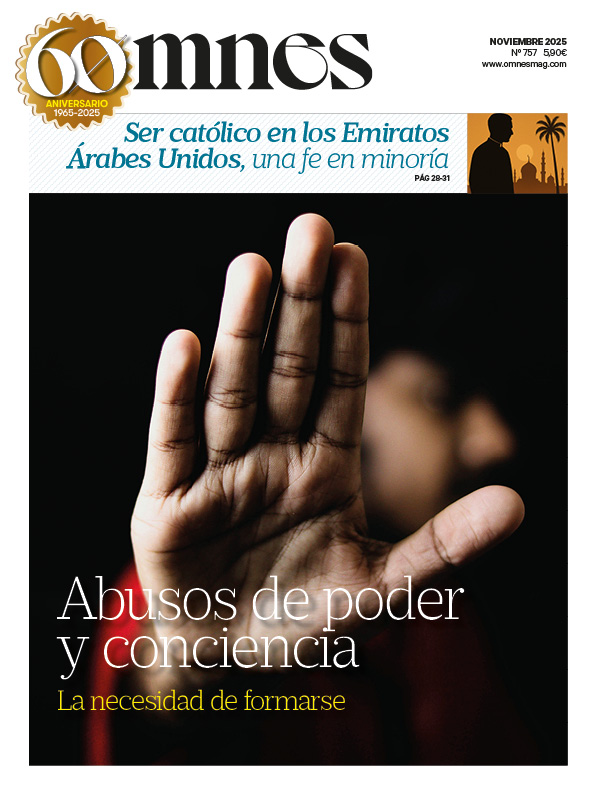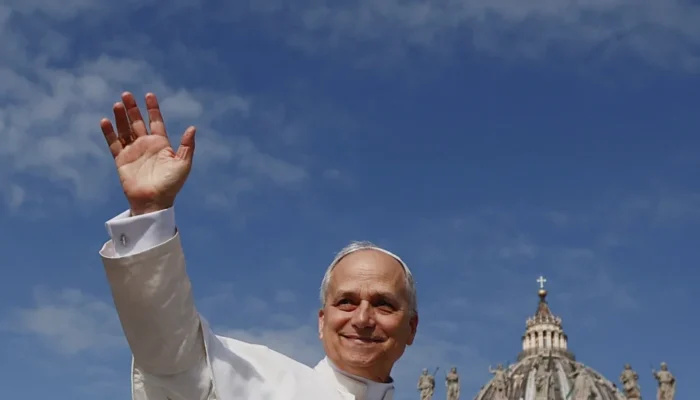George Steiner, a renowned literary critic, speaking of the Hebrew Bible, said that “.“all other books, be they stories, imaginary narratives, legal codes, moral treatises, lyrical poems, dramatic dialogues, or theological-philosophical meditations, are like sparks, often distant of course, which an incessant breath raises from this central fire.".
Indeed, for many centuries the Word of God witnessed to in Sacred Scripture has been a leaven of creativity in thought, art, law and economics. In the contemporary world, too, biblical motifs continue to show glimpses of their beneficial presence even in contexts that are far removed from Christian culture.
Window of Peace of the United Nations
The headquarters of the United Nations General Assembly in New York is undoubtedly a highly cosmopolitan crossroads. In its corridors, offices and conference rooms, a wide variety of people mingle in deliberately religiously aseptic work and relaxation spaces.
When you enter the building from the landscaped plaza at the north end, the large entrance hall offers a large welcoming space, filtered by a blue light that invites you to meditate. This illumination comes from a stained glass window, especially bright at dawn, representing the human yearning for peace.
It is a stained glass window of remarkable dimensions, 4.6 meters wide by 3.7 meters high, designed by Marc Chagall, with his peculiar style, where fantasy, reality and symbolism are combined. In its splendor can be distinguished several symbols that, in the midst of tensions, manifest a longing for peace and love.
Symbology
In the central part, a tree sprouts from the ground, dividing the composition into two sections. It could be the tree of the knowledge of good and evil, since it has at its side the cunning serpent that seduced Adam and Eve.
On the left is a paradisiacal vision where angels, humans and animals float in joy and peace in a luminous space.
In the upper central part, amidst a bouquet of red and violet flowers, an angelic creature tenderly brings her face close to a little girl. It is a kiss of peace that symbolizes love and harmony between Heaven and Earth. And there are even those who dare to discover in this sweet gesture a deeper meaning that would symbolize the mystical union with God, or the infusion of the Holy Spirit. Could this scene, placed in the center, even veiled allude to the Incarnation, which came to change the course of a history marked by sin from its beginnings?
The right, darker area represents the fallen world. A large crowd of people, men and women, children and the elderly, above which buildings can be glimpsed in the center, shows people who, caught in the tensions of the contemporary world, long for peace. At the bottom, a large woman kneels in grief, and in the middle of the crowd, a couple tenderly holds and protects their newborn child.
The footprint of the Bible
Above these figures, an angel, with golden wings of notable dimensions, delivers from Heaven two tablets, with a design analogous to those that classical iconography places in the hands of Moses when he descends from Sinai with the Ten Commandments. Next to him, a crucified man assumes all the drama of human suffering to bring peace to the world.
In this ensemble, two biblical symbols take center stage: the Tablets of the Law, which immediately bring to mind the Jewish culture, and the Crucified One, the Christian image par excellence. In addition, both figures share the same upper right area of the stained glass, establishing a dialogue between them on which much depends the configuration of a culture of peace. Only with respect for the natural law, synthesized in the Decalogue, and with the redeeming efficacy of the paschal mystery of Jesus Christ, will it be possible to return to the happy brightness of Paradise.
It is enough to contemplate and admire this work of contemporary art to see that the sparks of light coming from that great home, the Bible, have reached this non-religious crossroads of today's world.
How is it possible that the book of a people of shepherds and farmers, inhabitants of a small region, arid in a large part of its territory, and a passing zone between the great empires of antiquity, which was forged in the midst of bloody persecutions, deportations and occupations, has ended up by first capitalizing on the culture of the Roman Empire, and then extending its influence throughout the world? Why did its idea of a personal God, creator and provident, just and merciful, spread throughout the earth and took root everywhere in all kinds of native cultures? Why has the Bible had such a great influence for more than two millennia?
There are those who maintain that its success is the consequence of an unusual sequence of fortuitous events. From the emergence of a Roman empire, which fused a heterogeneous set of elements of power in the republic of Rome with the idiosyncrasies of many conquered peoples to form a single political, economic and cultural community, which achieved a potential and dimensions hitherto unknown, to the casual accession of Constantine to the imperial throne that drove from above the expansion of Christianity, ...
But that alone does not explain why Judeo-Christian values have had such an irresistible force over two millennia, and even less why they continue to maintain their full force for the majority of the world's population.
The Bible as a cultural engine
A deeper answer must be sought in the indelible mark that the text of the Bible has left on the human condition: in ethics, law, literature, music or art, and all the cultural manifestations that shape our identity.
But even that is not enough. Despite the remarkable impact of that great classic that is the Bible in such diverse and influential fields, it could be said provocatively, as T. S. Eliot did, that those who speak of the Bible as a literary monument often admire it only as a “a monument erected on the tomb of Christianity”. This also merits reflection.
The enormous potential as an engine of culture and progress that this classic of world literature has demonstrated over time, is it independent of its religious value, has nothing to do with the decisive role of the Hebrew Bible in shaping Judaism, nor with the testimony of a divine revelation that the Christian reader recognizes in a reading in dialogue of the First and New Testaments?
The foundational character of contemporary culture that corresponds to the Bible does not derive only from its literary power, but springs above all from the fact that it is a true word, which comes from God and has been given to humanity.
Professor of Sacred Scripture, University of Navarra, Spain








